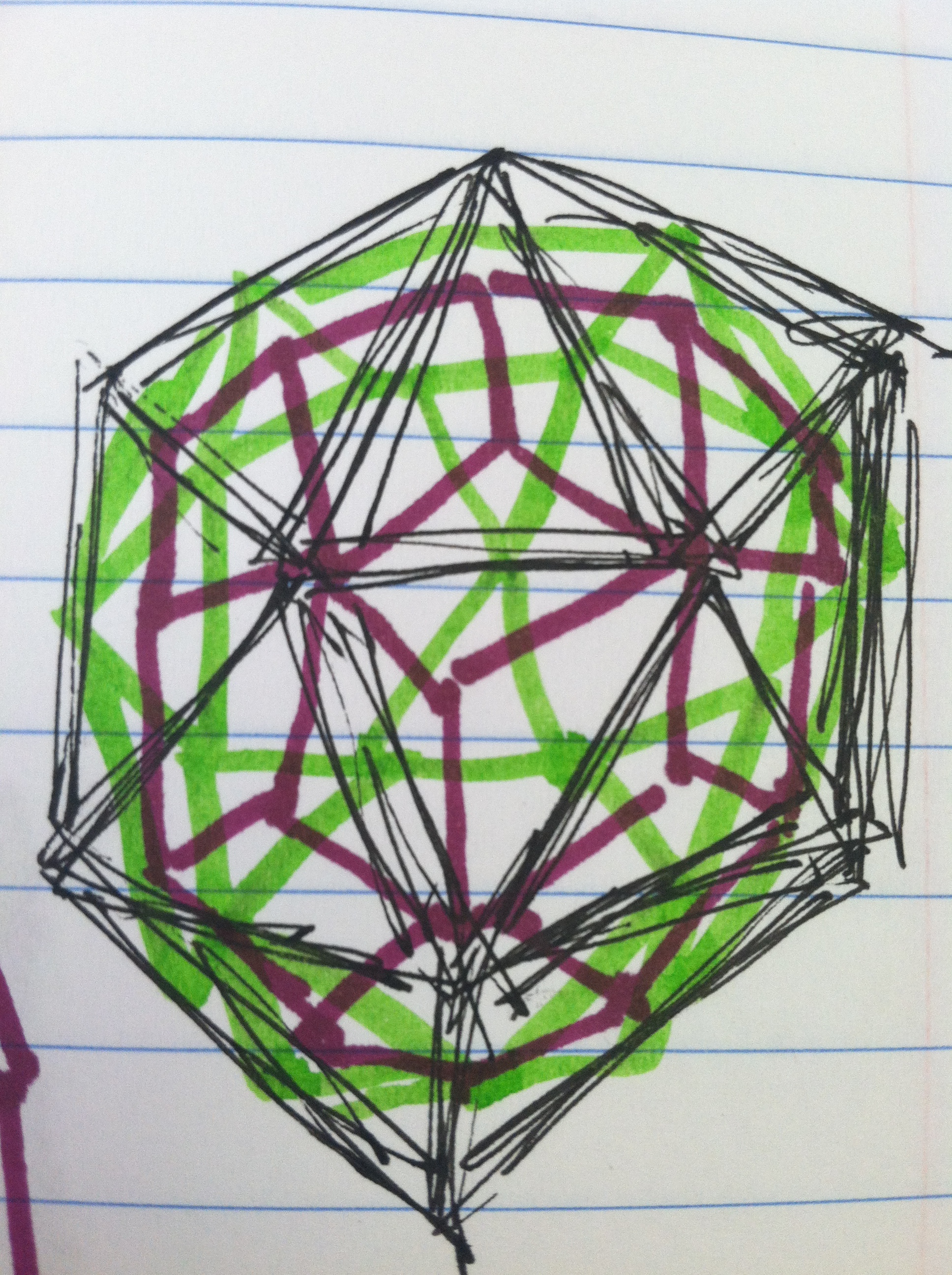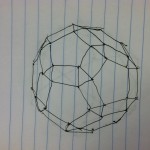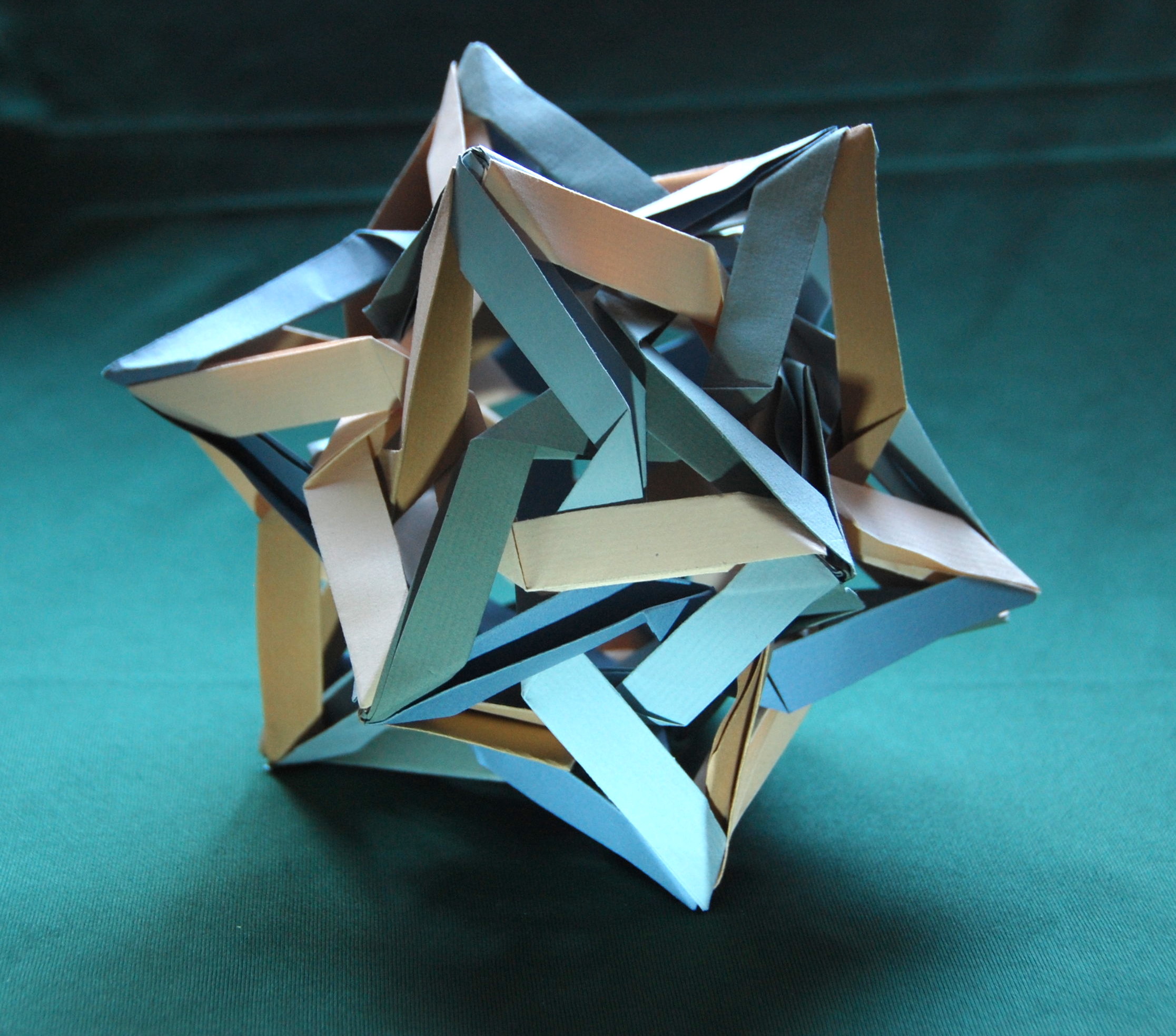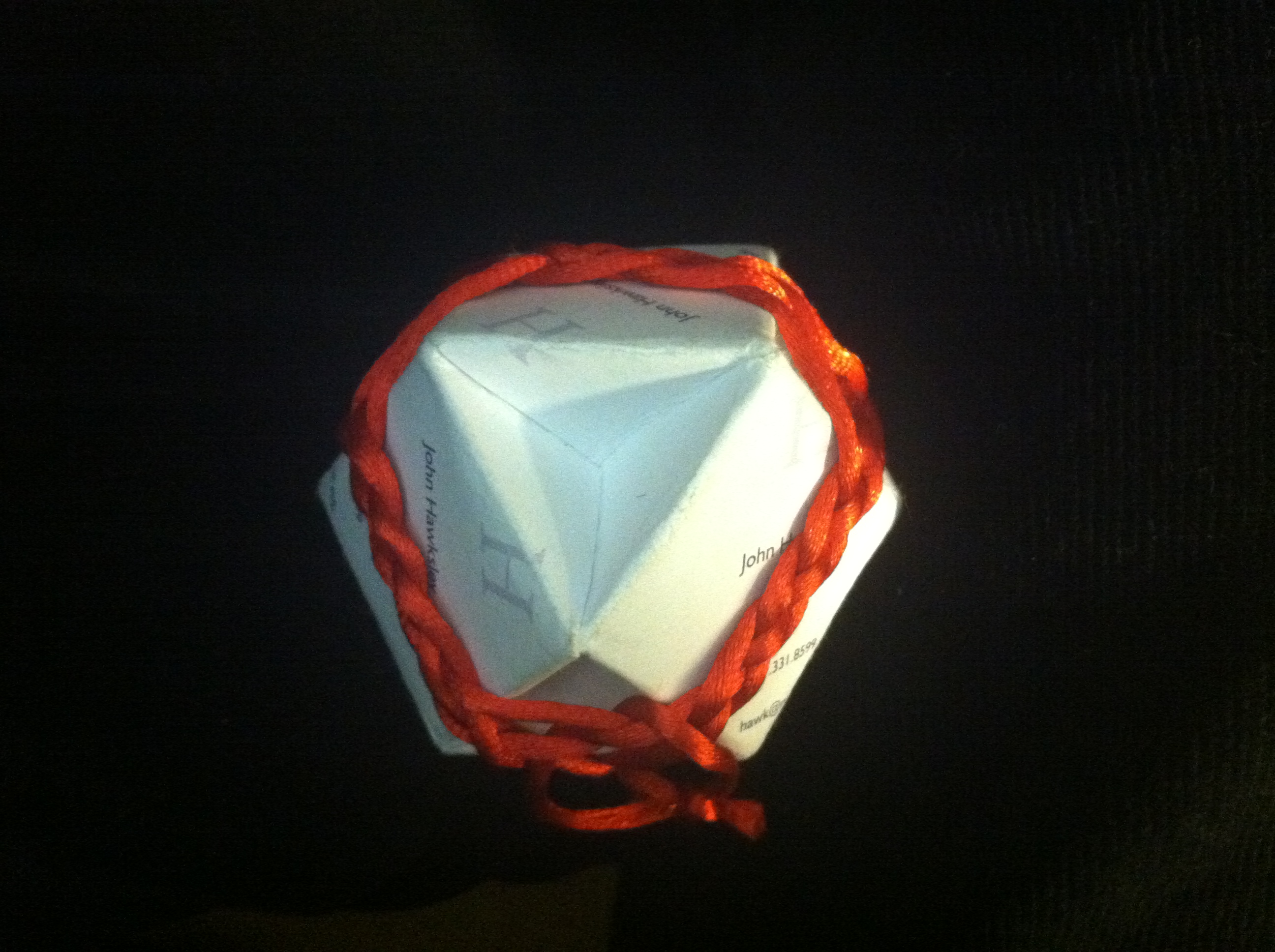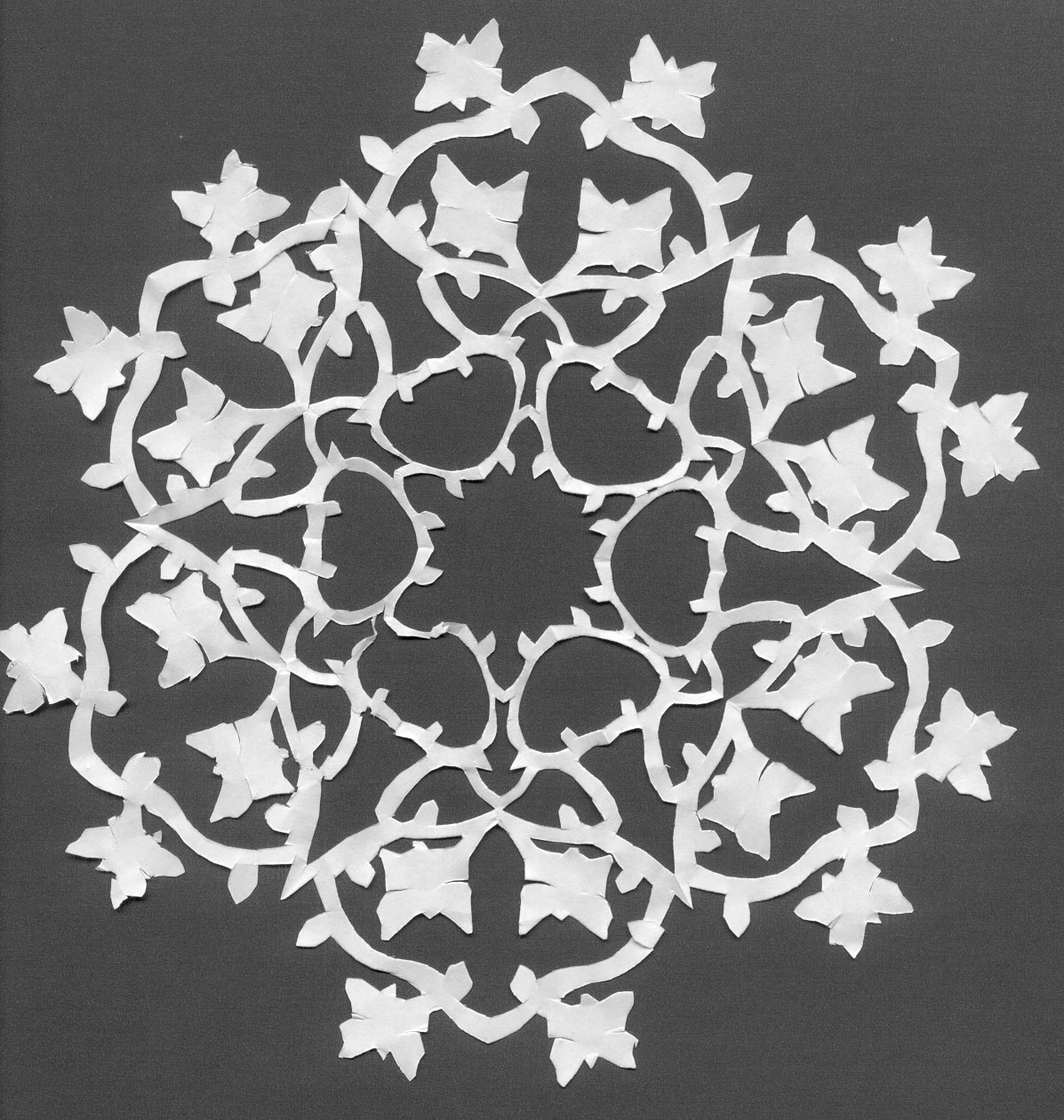involves drawing a polyhedron, and then progressively truncating it, taking it’s dual, or performing some other simple operation to come up with other polyhedra.
In the image sequence below, I started by drawing an icosahedron. By finding the midpoints of each edge segment, I was able to truncate it and create an icosidodecahedron.* I performed the same operation again to form the next shape in the sequence. The shape after that was formed by taking the dual of the previous shape. You can easily draw the dual polyhedron by finding the middle of the faces of your previous polyhedron, and using those points as the vertices of your new polyhedron.
If you have paper with pretty good translucency, you can create each new polyhedron on a new sheet. Of course, you can also overlay them on a single image.
You can use this strategy to create a flipbook that starts with a cube and slowly truncates it and morphs it into an octahedron.
*This is a full truncation. It is, of course, possible, to divide the edges up differently to partially truncate your shape.

